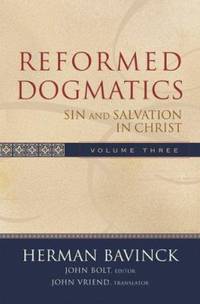Greidanus, Sidney. Sola Scriptura: Problems and Principles in Preaching Historical Texts. Eugene, OR: Wipf & Stock Publishers, 2001.
“Dare to be a Daniel!” What is the purpose of preaching? Is it to tell the story of redemption or to preach a moralistic sermon that will give me a burning in the bosom? Given the way I phrased that question, you might expect me to side with the former. True, I intend nothing but the harshest criticism of pietistic preaching. I agreed with every single criticism raised by the Schilderite school (or Redemptive-Historical [RH] school). Unfortunately, the Schilderite school does not give us any realistic alternatives.
The RH’s challenge is quite simple: if the point of preaching is to give us moralistic advice, then you do not need the bible to do it. Quite so. The target is not just moralistic preaching. Overly-subjective preaching or pietism is just as guilty. In pietism, the attention is on man and not on God’s finished work in Christ.
The exemplary approach sees the bible, particularly the Old Testament, as a source for illustrations (Greidanus 57). We will list a number of problems with moralistic/exemplar preaching:
* “Moralistic preaching is legalistic; it issues imperatives without the divine indicative” (79).
* Often the text itself does not tell us whether an action is good or bad (81). A good example is David’s marrying Abigail. David is clearly the hero of that story and the marriage, minus the dead husband, is quite beautiful. The problem is that David already has a wife. Such facts strain the “Go and do likewise” moment.
Problems with Subjectivist Preaching
* “The sad phenomenon of the scarcity in certitude also in our Gereformeerde Kerken is in no small measure due to the fact that these people have been taught to search for certitude where it cannot be found” (quoted in Greidanus 97).
Given the fatal problems with exemplarist preaching, do they have a comeback? They have several, but only one of them is any good. On a surface level reading it seems that the apostles appealed to Old Testament history as a model for today. 1 Corinthians 10 is such an example. Paul writes, “Now all these things happened unto them for examples.” Greidanus points out, however, that examples is tupoi/tupikos, types. This is closer to redemptive-historical than moralistic preaching.
No matter, is not Hebrews 11 such a text? It looks like it, but it might not help the moralist as much as one expects. No one seriously preaches a “roll-call” text like Hebrews 11. Maybe the author means something else. On one hand, I do not find the RH rebuttals very persuasive. On the other hand, this is not exactly what we would call a sermon today (yes, I know Hebrews was probably read aloud as a sermon).
The strongest text is James 5:16-18. James clearly appeals to Elijah as a model for us today.
The RH have a ready solution to individualism: the covenant and covenant history. This seems right enough, and I do think the answer is in this direction, but there are some problems, which we shall note below.
Redemptive history is “the successive realization in time of God’s thoughts of peace for us according to his fixed plan, and the fulfillment in time of this work-program which Father, Son, and Spirit decided upon before time” (123). This approach points to Christ and not in a haphazard way. It gives unity to history. It allows one to point to Christ without forcing Jesus into every river and house.
While such an approach is obviously superior to legalistic moralism, it has problems.
1) Schilder and other RH guys use the eternal decree in a different way than Scripture does. Schilder makes deductions from the decree concerning the course of history (174-175). Where Schilder might reason from the decree to history, sometimes Scripture moves in the opposite direction.
2) Schilder sometimes has to look for the “new phase” in RH. In some ways this is easy: Mt Sinai, Davidic covenant, and Pentecost. In other areas it is not obvious and the preacher is thrown back upon the same speculation criticized in the moralistic preachers. Even worse, this means the meaning is decided before the text is heard (179).
3) While progressive revelation is a legitimate category, Schilder more often uses it not to elucidate history, but eternal truths in God’s mind (182).
4) Scripture contains teaching (didache). It is not clear how RH can include that within its narrative of redemptive history.
5) RH sermons run the risk of being lectures on redemptive history, and since there is only one redemptive history, the lectures start to sound the same.
Conclusion
As with many surveys of 20th century Dutch theological controversies, it is not always clear what the main point is. Moreover, the book raises more questions than it answers. To be sure, Greidanus has written several volumes explaining how to preach in such a way. In any case, this was a valuable text that serves as a cautious reminder to both sides of the debate. It reminds us that neither moralistic legalism nor redemptive history fully exhausts the demands laid upon the preacher.


